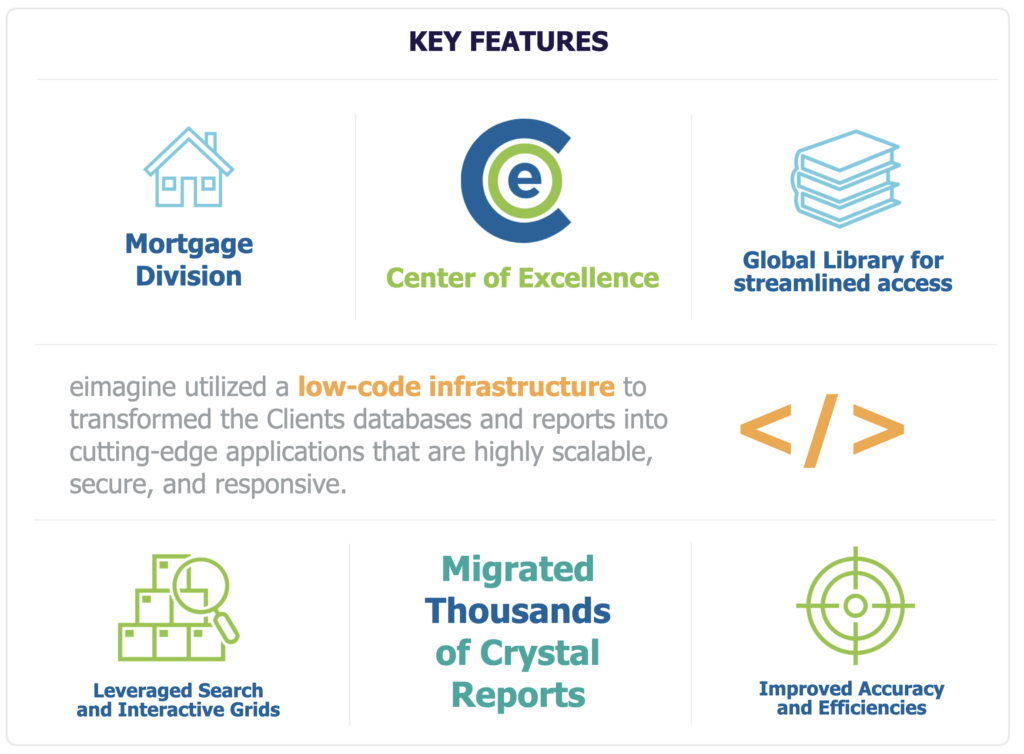THE CLIENT
J.P. Morgan Chase Bank, commonly referred to as simply JPMorgan Chase or Chase Bank, is one of the largest and most well-known financial institutions in the United States. It is a multinational banking and financial services holding company with its headquarters in New York City. JPMorgan Chase offers a wide range of financial services, including consumer and commercial banking, investment banking, asset management, wealth management, and private banking. The company operates in more than 100 countries and serves millions of customers worldwide.
JPMorgan Chase Bank’s mortgage division is one of the largest and most prominent in the United States. The company offers a wide range of mortgage products and services, including fixed-rate mortgages, adjustable-rate mortgages, FHA loans, VA loans, and jumbo loans. JPMorgan Chase has a large network of mortgage loan officers across the country who work with customers to find the right mortgage product for their individual needs.
THE CHALLENGE
Chase Bank is a large financial institution with millions of customers and a vast array of banking products and services. To manage and process all this data, the company relied on complex software systems and databases. One of the challenges that Chase faced was the complex coding of thousands of Crystal Reports and numerous databases.
Crystal Reports is a popular business intelligence tool that allows users to design and generate reports based on data from various sources, such as databases or spreadsheets. However, as the number of reports and databases grew, Chase found it increasingly difficult to manage the complex coding required to generate these reports. This led to issues with data accuracy, as well as inefficiencies in the reporting process.

THE SOLUTION/EFFORTS
Chase Bank tackled the challenges related to complex coding of Crystal Reports and managing its databases by adopting new technology and systems. The company made efforts to simplify the coding of Crystal Reports, reduce the number of reports being generated, and streamline its reporting processes. These measures improved the accuracy and efficiency of Chase’s reporting systems, enabling the company to meet its business objectives and better serve its customers.
To facilitate this process, eimagine worked closely with Chase’s Mortgage Division to migrate numerous Microsoft Access Databases and thousands of Crystal Reports to Oracle APEX. By utilizing Oracle APEX’s low-code infrastructure, eimagine transformed Chase’s databases and reports into cutting-edge applications that are highly scalable, secure, and responsive. This streamlined development processes, leveraging Oracle’s faceted search and interactive grids, allowing Chase to concentrate on strategic business objectives instead of grappling with complex code.
THE BUSINESS VALUE
Our project team designed a Center of Excellence governance model and delivery framework for Chase to ensure the company’s future success. This model was implemented across all conversion tasks and was carefully crafted with best practices in mind, incorporating opportunities for continuous improvement. Additionally, we built a global library that includes structured queries and reports for streamlined access. We also assisted Chase in establishing a project intake process for efficient handling of future report requests. These measures set Chase up for ongoing success in their reporting initiatives.
In summary, the challenges that Chase faced with its Crystal Reports and databases underscore the importance of effective data management and reporting in the banking industry. By investing in new technology and improving its processes, Chase was able to overcome these challenges and continue to provide superior services to its customers. Our project team’s contributions, including the governance model, delivery framework, global library, and project intake process, played a crucial role in Chase’s success.
